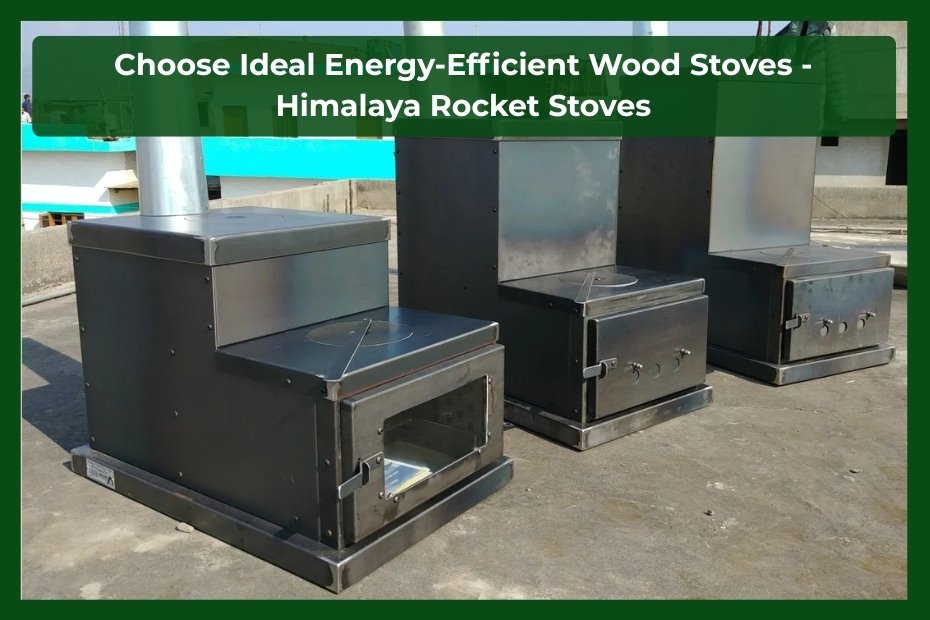Winds of winter usher in heating bills, soaring with energy efficiency thus taking the centre stage-and probably their ability to uphold an eco-friendly lifestyle that saves costs as well. Wood stoves and biomass heaters go a mile to cut heating costs and co2 emissions. In this complete how-to guide, you’ll learn about the most energy-efficient space heaters, survey the best biomass space heaters, and select the best wood burning stoves for your home.
Energy-Efficient Wood Burning Stoves: Why Choose Them?
The appeal of modern wood burning stoves goes way beyond their cozy ambiance. The wood stoves of today are highly engineered for efficiency, converting up to 85% of the wood’s energy into usable heat, whereas the traditional fireplaces lose up to 90% of heat through the chimney.
The Key Benefits Include:
- Heating bills are drastically cut down from 40-60% compared to electric or oil heating.
- Heating is independent of the volatile fossil fuel price market and periodic grid disruptions.
- Carbon-neutral heating when using wood sourced from sustainable sources.
- Backup heating that you can rely upon in case of a power outage.
- Enhances the value and looks of your home.
Best Biomass Space Heaters: Beyond Traditional Wood
There are many other organic fuel sources beside cordwood applicable for biomass heating, thus making the system very versatile and efficient.
Different Types Of Biomass Fuels
Wood Pellet: Sawdust pellets are compressed for uniform burn rates, low moisture content, and automated feed mechanism. Pellet stoves boast efficiency levels of 85-90% and require very little user interaction.
Corn and Grain: Agricultural biomass includes all such material comprising corn kernels or grains of wheat, which may act as an alternative fuel source giving heating energy similar to wood pellets and an added advantage in the areas of crop growing.
Wood Chips: Wood chips are used in greater biomass heat systems to heat spaces or multiple rooms at a reasonable price.
Compressed Wood Brick: Being created from sawdust and wood waste, these bricks burn longer and hotter than cordwood with very little ash and creosote formation.
Main Features of a Biomass Space Heater
The top biomass space heaters will have:
- Automatic fuel feeding capabilities for a steady heat with a minimum intervention
- Digital controls with programmable thermostats
- Heat exchangers of high efficiency that capture ample energy
- Cleaner burning processes, which satisfy strict emissions criteria
- Ash removal systems, easy to use and maintain
Safety Considerations
Safety considerations with wood-burning stoves include:
- Install CO and smoke detectors, preferably on every level
- Maintain proper clearances (generally 36″ from any combustibles)
- Have the chimney at an adequate height (generally, 3 feet above the roof penetration)
- Do not burn treated wood, garbage, or any materials which may be inappropriate
- Always keep a fire extinguisher nearby
- Do not allow children or pets to roam freely near hot surfaces
- Have chimney caps installed to prevent entry of animals and rain damage
- Never leave fires entirely unattended for long periods
Making Your Final Decision
Choosing among the most energy-efficient space heaters requires thinking over a number of factors:
Choose Pellet/Biomass Stoves If:
- You want automated, thermostat-controlled operation
- You prefer cleaner fuel handling
- You have limited wood storage space
- You want a steady heat supply when attended minimally
Choose Rocket Mass Heaters If:
- You are amenable to trying out unconventional designs
- You have lots of small-diameter wood on hand
- You desire utmost efficiency
- You appreciate radiant heat stored away
Conclusion
A trajectory towards finding the ideal energy-efficient wood-burning stove is littered with questions on heating requirements, availability of fuel, budgets, lifestyle concerns, etc. The options far outnumber the efficiency and environment-friendly options offered by traditional biomass stoves, modern-day biomass space heaters, or rocket stove designs.
Today’s best biomass space heaters and the most energy-efficient space heaters can really upgrade the home heating experience and greatly reduce the expense and environmental impact. Provided that it is selected properly, well-installed, and operated with care, the wood burning stove will serve the family for several decades, providing reliable warmth at an excellent price.
So, ready to move ahead? Local traders and certified installers are your best bet for customizing your perfect home heating solution. The effort you will invest should return once from the moment you begin enjoying a comfortable home, saving money, and being satisfied.
FAQs
1. What sort of space heater is most energy-efficient?
Modern EPA-certified wood and pellet stoves range from 75 to 90% efficiency levels, while rocket mass heaters defy measurement, doing well beyond 90%. This alone outperforms the traditional fireplace at 10% to 30%, and rocket mass heaters are even cheaper to run than electric heaters.
2. What is the difference between biomass heaters and wood stoves?
Pellet or compressed fuel is burned in biomass heaters with a system of automated feeding and control, whereas wood stoves burn logs, and the filling up of the wood stoves remains manual. Biomass units offer greater convenience but need electricity to run; wood stoves need no electricity.
3. How regularly can I clean my wood stove and chimney?
It depends on ash buildup, remove ash when it reaches approximately 1 or 2 inches. Clean Collins Glass weekly. Inspect the chimney, cleaned annually at least, more often if there is heavy burning. Regular cleaning ensures safety and efficiency.
4. Which type of wood burns best in a wood stove?
Seasonal hardwoods like maple, oak, ash, or birch dried for 6–18 months with less than 20% moisture are good for burning. Don´t use treated wood, pine, or composite woods. These are dangerous and can damage the stove.
5. Will a wood stove work during a power outage?
That is yes. Traditional wood stoves operate without electric power and can even be used to cook food. Pellet and biomass stoves require electricity but there may be some kind of battery backup.


Recent Comments